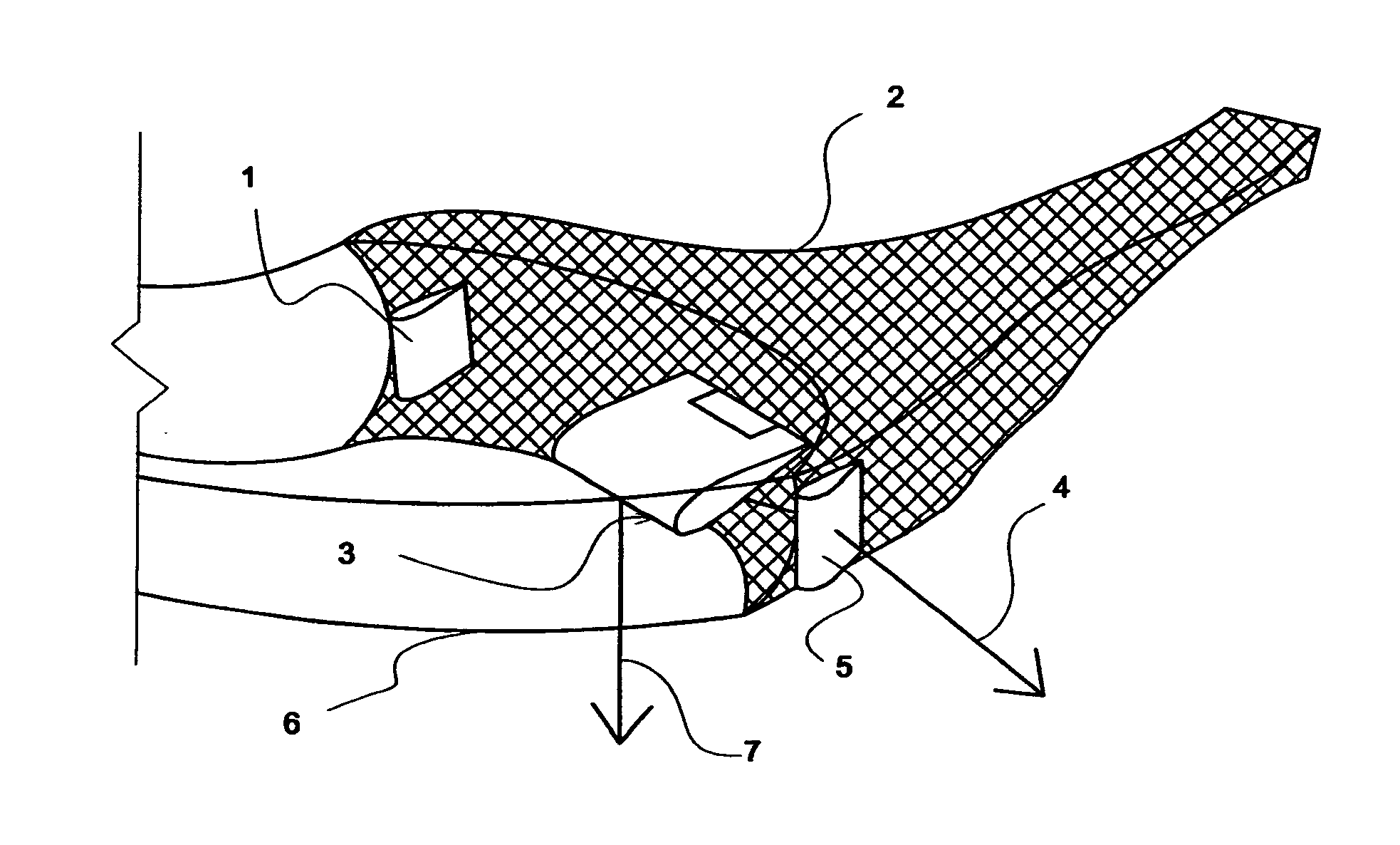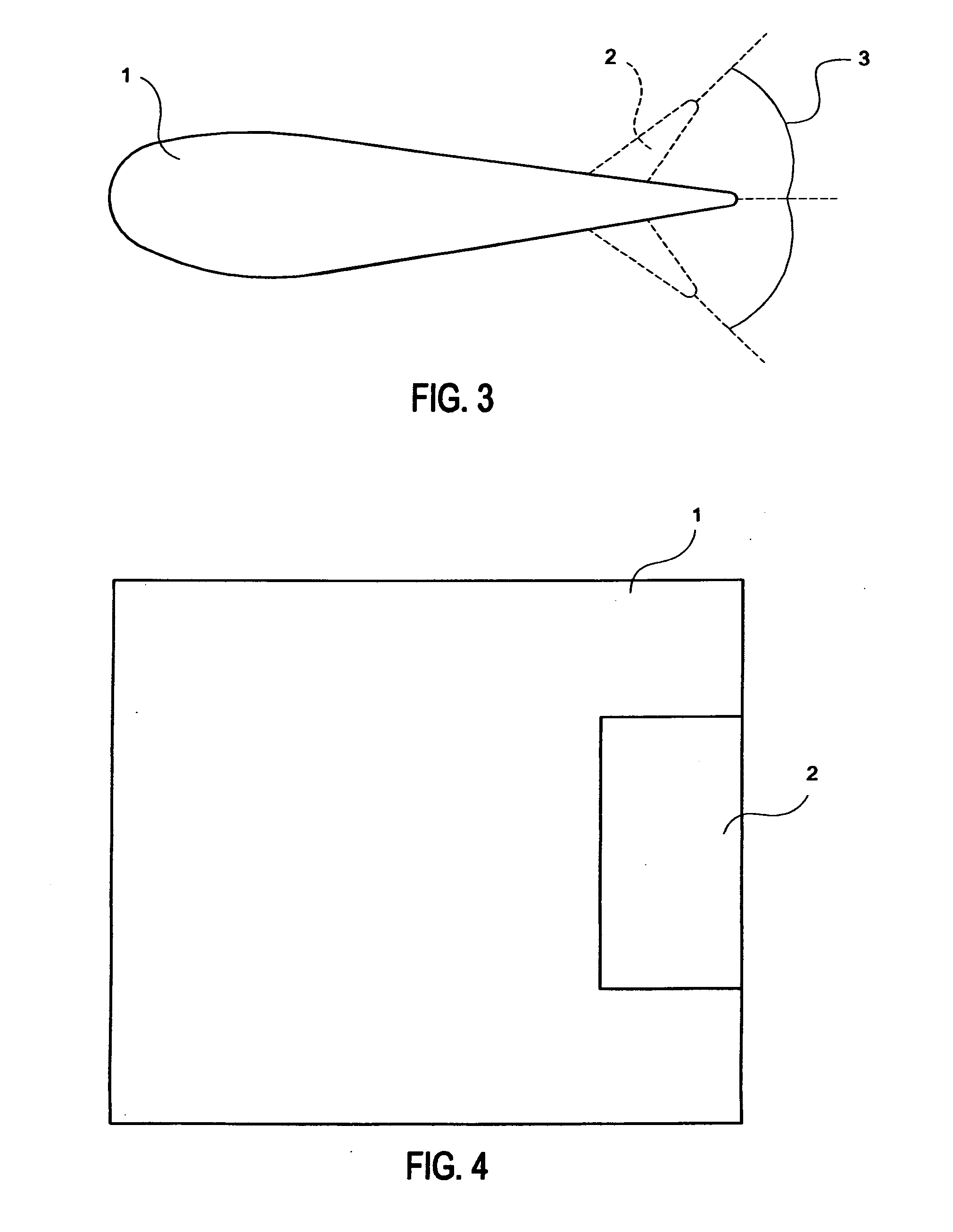"Smart" Semi-Autonomous Trawler Fishing Net
- Summary
- Abstract
- Description
- Claims
- Application Information
AI Technical Summary
Benefits of technology
Problems solved by technology
Method used
Image
Examples
Embodiment Construction
[0049]FIG. 1 illustrates the prior art fishing net. This “dumb” net uses heavy “rollers” to maintain contact with the seafloor and optionally heavy side “doors” (not depicted) to maintain horizontal shape and stability. Such a bottom-trawling net is extremely harmful to the sea floor environment, and has been implicated in destruction of coral, other natural formations, and fish (larval) hatcheries, among other adverse effects.
[0050]FIG. 2A is an isometric view of the invention. While the body of the net is similar in shape to prior art, the front is entirely different. Rather than heavy rollers and doors to maintain a given shape, the net mouth is held open through the physical integration of hydrofoils which, through the action of water flowing over them as the fishing vessel pulls them, form the desired net mouth shape either passively (Due to their shape as a lifting surface in accordance with Bernoulli's theorem), actively (Through the action of a “hydrovator” control surface),...
PUM
 Login to View More
Login to View More Abstract
Description
Claims
Application Information
 Login to View More
Login to View More - R&D
- Intellectual Property
- Life Sciences
- Materials
- Tech Scout
- Unparalleled Data Quality
- Higher Quality Content
- 60% Fewer Hallucinations
Browse by: Latest US Patents, China's latest patents, Technical Efficacy Thesaurus, Application Domain, Technology Topic, Popular Technical Reports.
© 2025 PatSnap. All rights reserved.Legal|Privacy policy|Modern Slavery Act Transparency Statement|Sitemap|About US| Contact US: help@patsnap.com



